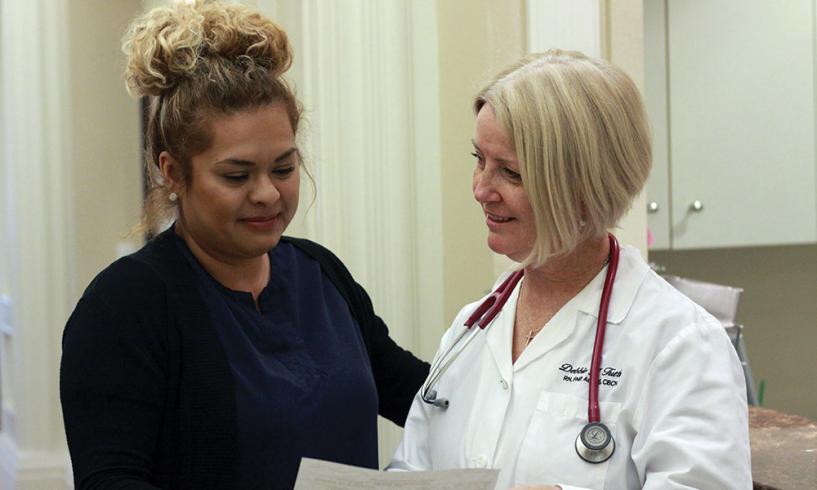At the onset, patients diagnosed with cancer can feel a loss of control. Research has shown that when patients and providers participate in shared decision making (SDM), both parties find greater satisfaction in the overall decision and adherence to the treatment plan improves.
In clinical trial recruitment, providers and research nurses may assume that patients are hesitant to make a judgment about the benefits and risks of a trial, but through her research on SDM with clinical trial candidates, ONS member Barbara A. Biedrzycki, PhD, RN, MSN, CRNP, AOCNP®, found that the opposite was true: the majority of patients preferred collaborating with their providers when these life-altering decisions were made.
Biedrzycki is an oncology certified adult nurse practitioner at the Sidney Kimmel Comprehensive Cancer Center at Johns Hopkins in Baltimore, MD. Many of the people she cares for have advanced pancreatic cancer and are involved in cutting-edge clinical trials. Her research continues to guide her in practicing SDM.
Clinical Trials Nursing 101
Clinical trials are an important part of advancing patient care, and nurses who coordinate clinical trials require a specialized skill set. Learn more through ONS's clinical trials interactive course available now.
Clinical Trial Decisions
“The most interesting result is that the majority (87%) of the 197 study participants preferred SDM over independently deciding on treatment (17%), and not a single participant preferred to passively let the clinician decide,” Biedrzycki says. “These findings are important because clinicians and researchers may exercises an overabundance of caution and withhold their expert advice in an effort not appear coercive.” Biedrzycki found that patients wanted to hear their provider’s opinion. SDM empowered patients to make knowledgeable and personal choices and to be vested in their treatment plans.
Biedrzycki also noted that despite having a high education level (77% college graduates, 39% with a graduate or post-graduate degree), 75% of the participants did not have enough basic research knowledge to make a decision about joining a cancer clinical trial.
“While research participants may have been given enough information regarding the trial, they may not have adequate knowledge about basic clinical research,” she explained. “Within clinical research, the goal is to provide adequate information for SDM to happen within a person’s preferred decision-making style.” The best way to assess how a person prefers to make decisions in any medical setting is simply to ask.
Tariman, Doorenbos, Schepp, Singhal, and Berry also studied SDM in a descriptive, cross-sectional study of older adults with multiple myeloma and had similar findings. The majority, 55% of participants older than 60, preferred SDM where 40% of those studied made decisions after carefully considering the physician’s opinion. One participant preferred to leave the decision to the physician.
Engaging the Oncology Nurse
So what do oncology nurses need to know to promote SDM? Kane et al. encouraged the use of a stepwise process to ensure that SDM happens in the clinical setting.
- Invite patient participation in SDM.
- Ask about decision-making preferences (e.g., collaborative, independent, passive).
- Present options and provide risk-benefit ratios.
- Evaluate options and facilitate careful consideration prior to making a collaborative decision.
As healthcare emphasis shifts to increasing patient involvement in their care, oncology nurses can coach patients to ask for the information they need in a way that makes sense and is congruent with their preferences for making healthcare decisions.






